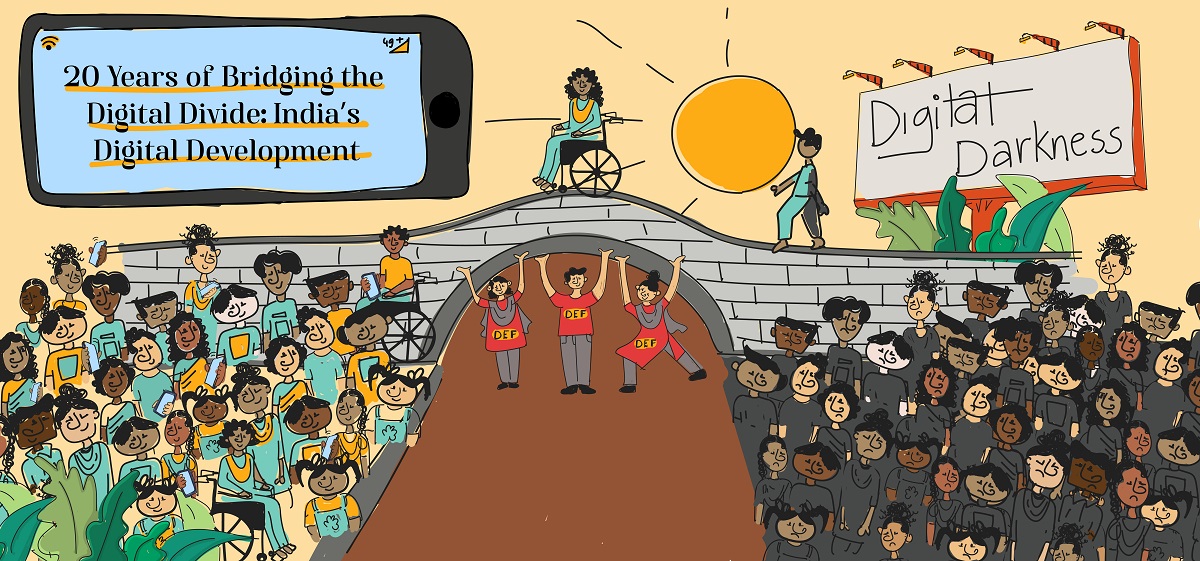In 2002 less than 17 million people had access to the Internet making up 1.5% of the total population of the country. 20 years later nearly 700 million people are online so about half of the country has gained access to the Internet. While today’s digital issues are far more complex and require comprehensive digital solutions, in many ways the basic challenge remains the same: there is still a digital divide in the country that is keeping nearly half of the country in information darkness.

The Internet came to India in 1995 and it brought a host of opportunities for this rising economy and developing nation. A few pioneers in the field grabbed this opportunity with both hands and got onto the Internet exploring its functions and its wide scope. In 2002 on the 16th of December an idea was established with the formation of the Digital Empowerment Foundation (DEF). DEF took the first step in India’s story of digital development. The basis of DEF’s formation was the fact that India was an information poor country. Most people did not have access to information, education, rights, entitlements and opportunities and DEF’s aim was to be the link between the provider and the person in need. In conventional terms the former being the government and the latter being the country’s citizens.
In 2002 less than 17 million people had access to the Internet making up 1.5% of the total population of the country. DEF set out to first decrease and in time through policy interventions and on-ground work bridge this digital divide. 20 years later nearly 700 million people are online so about half of the country has gained access to the Internet. While today’s digital issues are far more complex and require comprehensive digital solutions, in many ways the basic challenge remains the same: there is still a digital divide in the country that is keeping nearly half of the country in information darkness. The difference is that the 98.5% who did not have access to the Internet in 2002 were not in complete information darkness, but in this hyperconnected post-COVID world, the 50% who are not online are in complete information darkness.
Striving to bridge the digital divide and provide access to information and digital services to all DEF is working across the fields of finance, governance, education, livelihood and health to empower unconnected rural communities. In this edition of Digital Footprints stories of SoochnaPreneurs empowering their communities through the use of digital tools have been highlighted. In addition to this, stories of financial empowerment show how DEF’s Project Revive (Digital Financial Inclusion) is empowering rural women entrepreneurs to become successful businesswomen through the use of relevant mobile applications. This program is helping them formalise their businesses through proper digital bookkeeping.
These are just a few interventions in DEF’s broad and holistic vision of India’s digital development. Stay tuned to Digital Footprints, DEF’s monthly newsletter for updates on DEF’s on-ground work and policy interventions for the digital development of India.










